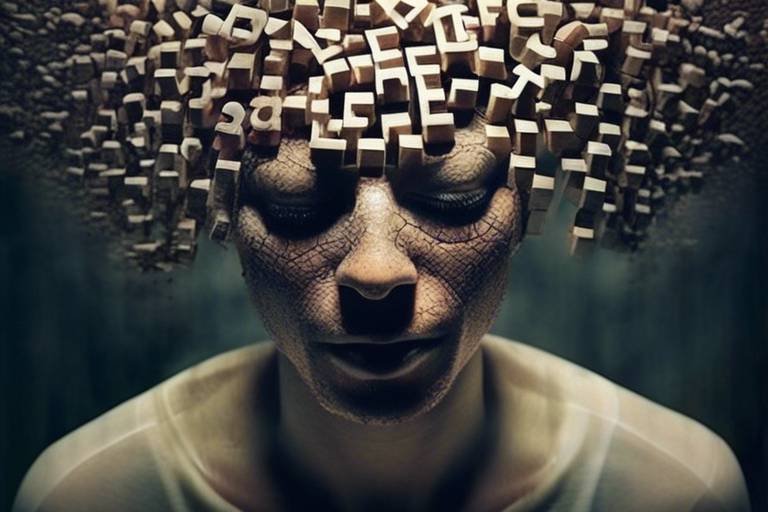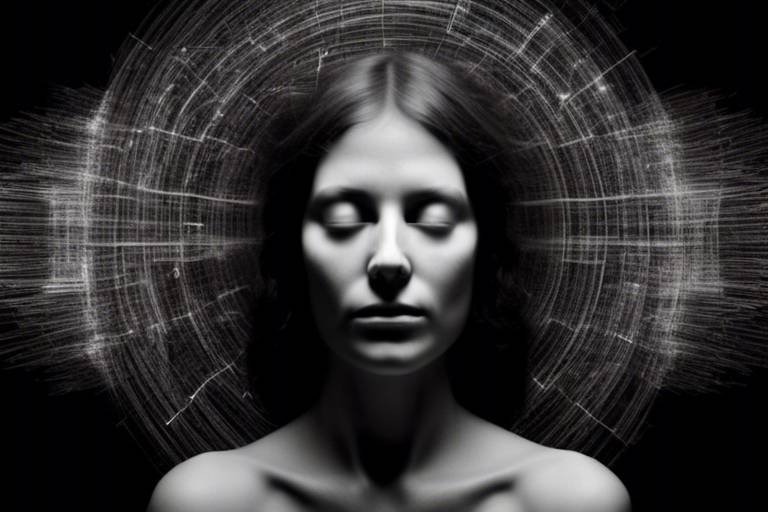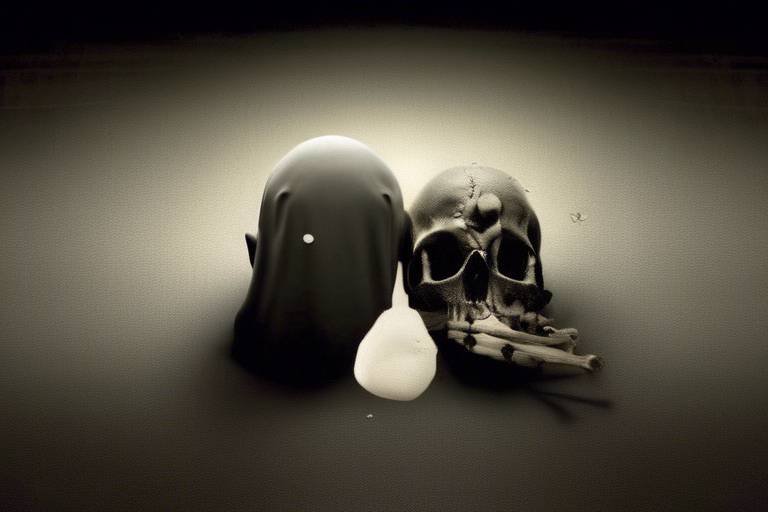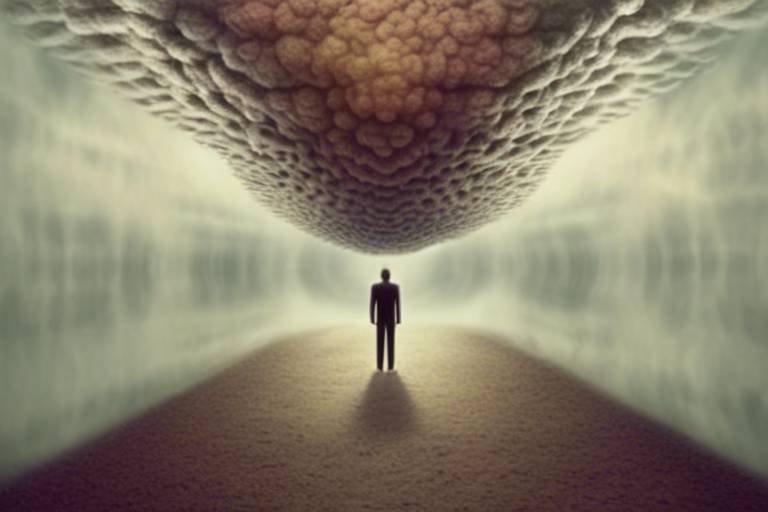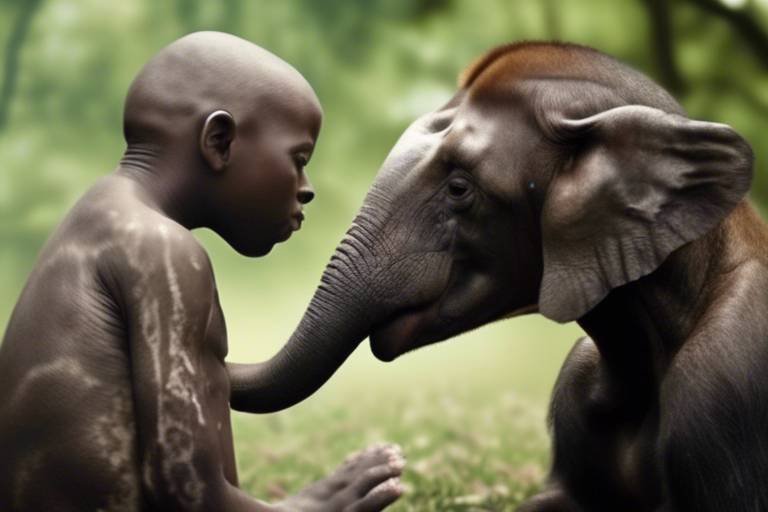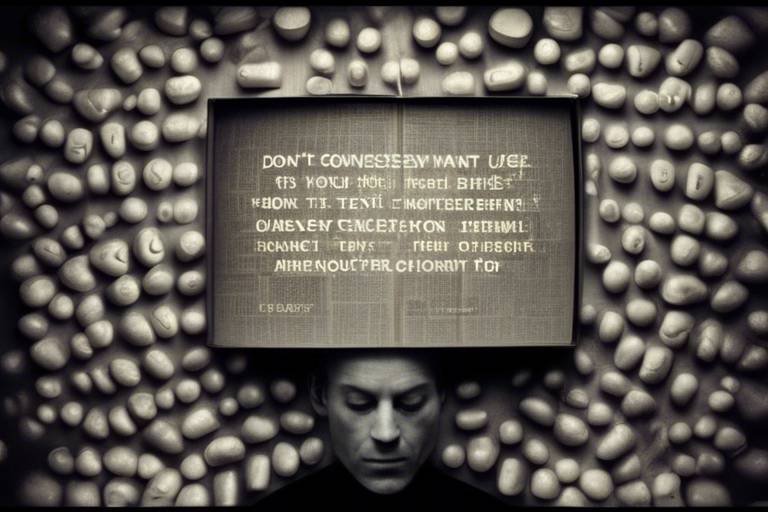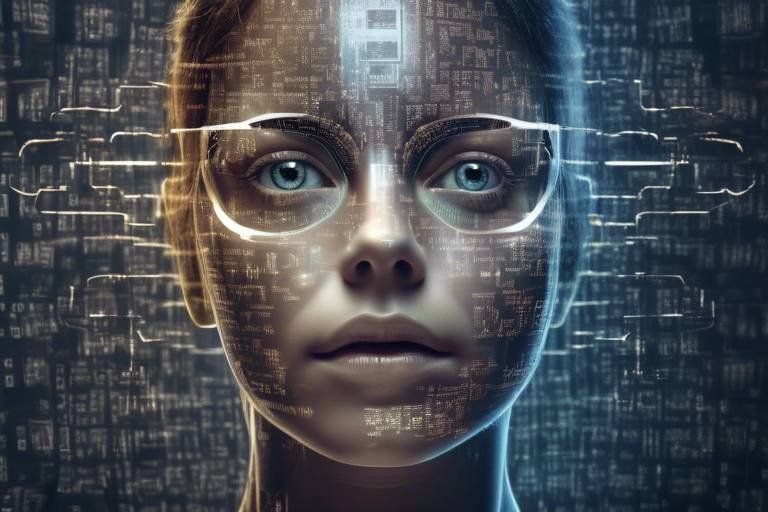Perception and Consciousness - How Are They Connected?
Have you ever wondered how your mind interprets the world around you? The connection between perception and consciousness is a fascinating topic that dives deep into the essence of human experience. It's like trying to solve a puzzle where each piece represents a different aspect of how we understand reality. Perception is not just about seeing or hearing; it's about how our brain processes and makes sense of sensory information. On the other hand, consciousness is the awareness that allows us to experience those perceptions. Together, they form a dynamic duo that shapes our reality.
Imagine walking through a bustling market. The vibrant colors of fresh fruits, the aromatic spices wafting through the air, and the cacophony of voices all blend together to create a rich tapestry of experience. Your perception allows you to notice these details, while your consciousness enables you to reflect on them, to feel joy, nostalgia, or even anxiety. This intricate relationship is essential for navigating our daily lives, influencing everything from our mood to our decision-making processes.
As we explore this connection, we uncover layers of complexity that reveal how our awareness shapes our experiences. For instance, when we focus intently on a task, our consciousness filters out distractions, honing in on what's essential. Conversely, our perceptions can be influenced by our state of consciousness; think about how your mood can color your interpretation of a friend’s comment. In essence, perception and consciousness are intertwined, continuously influencing and redefining each other.
Understanding this relationship opens up a world of questions: How do our perceptions shape our beliefs? How does consciousness affect our emotional responses? These inquiries not only touch on psychological and philosophical aspects but also delve into neuroscience, prompting us to consider the biological underpinnings of these processes. The more we learn about perception and consciousness, the clearer it becomes that they are fundamental to our existence, shaping how we interact with the world and each other.
In conclusion, the connection between perception and consciousness is a profound and intricate web that defines our reality. By examining how these two elements interact, we can gain insights into our own experiences, paving the way for a deeper understanding of what it means to be human.
- What is the difference between perception and consciousness?
Perception refers to the process of interpreting sensory information, while consciousness is the state of being aware of that information and one's thoughts and feelings. - How do altered states of consciousness affect perception?
Altered states, such as those induced by meditation or substances, can significantly change how we perceive reality, often leading to unique experiences that challenge our usual understanding. - Can our perceptions change our consciousness?
Yes, our perceptions can influence our emotional and mental state, which in turn can modify our conscious awareness and how we interpret future experiences.

The Nature of Perception
Perception is more than just a passive reception of sensory information; it's an intricate process that shapes our understanding of the world around us. Imagine walking into a bustling café. The aroma of freshly brewed coffee, the chatter of conversations, and the sight of people immersed in their laptops all converge to create a rich tapestry of sensory experiences. But how do we make sense of all this? That's where perception comes into play. It’s like the brain’s personal DJ, mixing and matching sensory inputs to create a coherent soundtrack of our reality.
At its core, perception involves several stages: sensation, organization, and interpretation. First, our senses pick up stimuli from the environment—light waves hit our eyes, sound waves reach our ears, and chemical signals interact with our taste buds. This is the sensation phase, where raw data is collected. Next comes the organization phase, where the brain categorizes and organizes these sensations. Think of it as sorting through a messy closet: you need to group similar items together to make sense of the chaos.
Finally, we reach the interpretation phase, where our brain assigns meaning to the organized data. This is where things get really interesting! Our past experiences, cultural background, and even our current emotional state all influence how we interpret what we perceive. For instance, if you’ve had a bad experience with dogs, you might perceive a barking dog as a threat, while someone who loves dogs might see it as a friendly greeting. This subjective nature of perception highlights how it’s not just a straightforward process; it’s colored by our personal narratives.
Moreover, perception is not just limited to the five senses we often hear about—sight, sound, touch, taste, and smell. It also includes kinesthetic perception (our sense of body movement and position) and vestibular perception (our sense of balance). Each of these senses contributes to our overall experience and understanding of reality. For instance, when you ride a roller coaster, your eyes send visual cues to your brain, while your vestibular system tells you about the twists and turns. Together, they create the exhilarating experience of the ride.
Interestingly, perception is also influenced by attention. What we focus on can drastically change our experience. Have you ever been in a crowded room and zeroed in on one conversation, tuning out the rest? That’s selective attention at work, demonstrating how our conscious focus can shape what we perceive. In fact, studies show that when we are preoccupied or distracted, we might miss significant details—like a magician performing a trick right in front of us!
In conclusion, perception is a complex interplay of sensory information, personal experiences, and conscious attention. It’s the lens through which we view the world, and understanding it can help us better navigate our everyday lives. So, the next time you find yourself in a new environment, take a moment to appreciate the richness of your perceptual experience. It’s a fascinating journey of the mind!

The Role of Consciousness
Consciousness is like the spotlight on a stage, illuminating our thoughts, feelings, and surroundings. It’s the essence of our experience, shaping how we perceive the world around us. Without consciousness, the sensory information we receive would be like a movie playing without sound—it might be there, but it wouldn’t resonate with us in any meaningful way. So, what exactly does consciousness do? It allows us to filter through the noise of our sensory experiences, focusing on what truly matters to us at any given moment.
At its core, consciousness serves several vital functions:
- Awareness: It provides us with an awareness of our inner and outer worlds, enabling us to navigate life effectively.
- Decision-making: It plays a crucial role in decision-making processes, helping us weigh options and choose paths based on our experiences and values.
- Emotion Regulation: Consciousness helps us recognize and manage our emotions, allowing us to respond to situations thoughtfully rather than impulsively.
- Memory Integration: It aids in integrating memories and experiences, shaping our understanding of ourselves and our place in the world.
Consider consciousness as a vast ocean. Each wave represents a thought or feeling, constantly changing and shifting. Some waves are small and barely noticeable, while others crash dramatically onto the shore of our awareness. This dynamic nature of consciousness allows us to adapt to our surroundings, learn from our experiences, and grow as individuals. It’s fascinating to think about how our consciousness can expand or contract based on our focus. When we’re deeply engaged in a task, our consciousness narrows to that specific activity, while in moments of daydreaming, it can stretch far and wide, exploring possibilities beyond our immediate reality.
Moreover, consciousness is not just a passive observer; it actively shapes our perceptions. Think of it as a pair of glasses through which we view the world. Depending on the lens we wear—whether it's tinted with positivity, negativity, or neutrality—our perceptions can dramatically change. This interplay between consciousness and perception is what makes our experiences uniquely ours. For instance, two people can witness the same event but interpret it entirely differently based on their conscious awareness and previous experiences.
As we delve deeper into the topic, it’s essential to recognize that consciousness is not a monolithic entity. It exists on a spectrum, with different states influencing how we perceive reality. From the clarity of waking consciousness to the surreal nature of dream consciousness, each state offers a distinct perspective. Understanding these nuances can help us appreciate the complexity of human experience and the profound impact consciousness has on our lives.
In summary, consciousness is a powerful force that shapes our perception and understanding of reality. It allows us to interact meaningfully with the world, guiding our thoughts and actions. By exploring the role of consciousness, we can unlock deeper insights into our experiences and the nature of existence itself.
Q: What is consciousness?
A: Consciousness is the state of being aware of and able to think about one's own existence, thoughts, and surroundings.
Q: How does consciousness affect perception?
A: Consciousness influences perception by filtering sensory information and shaping how we interpret our experiences based on our awareness and focus.
Q: Are there different types of consciousness?
A: Yes, there are various types of consciousness, including waking, dreaming, and altered states, each affecting perception differently.
Q: Can consciousness be altered?
A: Yes, consciousness can be altered through various means, such as meditation, drugs, or sleep, leading to different perceptual experiences.

Types of Consciousness
When we talk about consciousness, it’s essential to recognize that it’s not a one-size-fits-all concept. Instead, it encompasses a variety of states, each with its own unique characteristics and implications for how we perceive the world around us. In essence, consciousness can be categorized into several types, including waking consciousness, dream consciousness, and altered states of consciousness. Each of these states plays a crucial role in shaping our perceptions and experiences, influencing everything from our daily decisions to our emotional responses.
Let’s delve deeper into these types of consciousness. First up is waking consciousness. This is the state we experience during our daily lives, characterized by a heightened awareness of our surroundings and a clear understanding of our thoughts and feelings. It’s during this state that we make decisions, interact with others, and navigate through our environments. Waking consciousness is essential for processing sensory information, allowing us to respond effectively to the world. Imagine it as the light switch that illuminates our reality; without it, we would be lost in darkness, unable to make sense of our experiences.
Next, we have dream consciousness, which occurs when we enter the realm of sleep. This state is fascinating because it often reflects our subconscious mind, presenting a tapestry of thoughts, emotions, and memories in a way that can be both surreal and enlightening. Dreams can shape our perceptions of reality, influencing how we feel and think upon waking. For instance, a night filled with vivid dreams might leave you feeling inspired or anxious, depending on the content. It’s like a movie reel playing in our minds, where each scene can alter our emotional landscape and provide insights into our inner selves.
Finally, we encounter altered states of consciousness, which can be induced through various means such as meditation, substance use, or deep relaxation. These states can profoundly affect our perceptions, often leading to unique experiences that challenge our understanding of reality. During these moments, individuals might report feelings of unity with the universe, heightened creativity, or even profound insights about life. Think of altered states as a different lens through which we can view our existence—sometimes, they reveal aspects of reality that waking consciousness simply cannot grasp.
In summary, the types of consciousness—waking, dream, and altered—each contribute to the rich tapestry of human experience. They shape how we perceive the world and ourselves, influencing our thoughts, feelings, and actions in profound ways. Understanding these different states can help us appreciate the complexity of our minds and the intricate dance between perception and consciousness.

Waking Consciousness
Waking consciousness is the state of awareness we experience when we are fully alert and engaged with our surroundings. It is the lens through which we interpret the world, allowing us to make decisions, solve problems, and interact with others. Imagine it as the bright spotlight on a stage, illuminating the actions and events of our daily lives. Without this clarity, navigating our environment would be akin to stumbling through a dark room, unsure of where to step next.
In this state, our brains are processing a constant influx of sensory information—from the sounds of a bustling city to the subtle changes in facial expressions during a conversation. Each sensation is a piece of the puzzle that helps us understand our reality. But how does this happen? Well, it’s all about the intricate dance between our sensory organs and the brain. When we see, hear, or touch something, our senses relay that information to the brain, which then interprets it based on past experiences, emotions, and even cultural context.
This process is not just mechanical; it is deeply influenced by our consciousness. For instance, have you ever noticed how your mood can affect how you perceive a situation? If you’re feeling upbeat, a rainy day might seem cozy and peaceful; however, if you’re down, that same rain could feel dreary and suffocating. This interplay highlights the subjective nature of perception—what one person sees as a challenge, another might view as an opportunity.
Moreover, waking consciousness is crucial for decision-making. It allows us to weigh options, consider consequences, and choose our paths. Think of it as a mental chess game where each move is calculated based on the current state of the board (or our environment). Our ability to focus, reflect, and plan is what sets us apart in the animal kingdom, enabling us to thrive in complex societies.
Interestingly, the brain doesn’t just passively receive information; it actively shapes our perceptions. This is where attention comes into play. Our conscious focus can filter out distractions and enhance our understanding of what’s important at any given moment. For example, when you’re engrossed in a fascinating book, the world around you fades away. This selective attention not only enriches our experiences but also highlights the dynamic relationship between consciousness and perception.
In summary, waking consciousness is more than just being awake; it is a rich tapestry woven from our thoughts, feelings, and sensory experiences. It empowers us to navigate the complexities of life, making sense of the world around us. As we continue to explore the depths of consciousness, we uncover the profound ways it shapes our perception, ultimately influencing how we engage with reality itself.

Dream Consciousness
Dream consciousness is a fascinating realm that unfolds while we sleep, providing us with a unique window into our subconscious minds. It's like stepping into a theater where our thoughts, emotions, and experiences play out in vivid, sometimes surreal, scenes. Have you ever woken up from a dream feeling like you just lived an entire lifetime? That’s the power of dream consciousness! It allows us to explore scenarios that our waking mind might dismiss as impossible or absurd.
During sleep, specifically in the REM (Rapid Eye Movement) stage, our brains become incredibly active, almost as if we're awake. This is when most dreaming occurs, and the dreams can range from mundane to extraordinary. In this state, our perceptions are not bound by the physical laws of the waking world. For instance, flying through the sky or conversing with long-lost friends can feel entirely normal. This fluidity in dream consciousness highlights how our perceptions are shaped by our emotions and memories rather than strict reality.
One of the most intriguing aspects of dream consciousness is how it can reflect our waking life experiences. Dreams often serve as a canvas for our subconscious to process emotions, unresolved conflicts, or even daily events. For example, if you had a stressful day, your dreams might manifest that anxiety in chaotic or unsettling scenarios. Conversely, dreams can also offer moments of clarity, helping us confront fears or gain insights into our lives.
Moreover, dreams can influence our waking perceptions and decisions. Have you ever had a dream that inspired you or gave you a new perspective on a problem? This phenomenon, where dreams spill over into our conscious thoughts, shows just how intertwined our consciousness and perception are. It's as if our mind is continuously working, even when we think we're at rest.
To illustrate the impact of dream consciousness, consider the following table that outlines some common themes in dreams and their potential meanings:
| Dream Theme | Possible Interpretation |
|---|---|
| Falling | A feeling of loss of control or insecurity in waking life. |
| Flying | A desire for freedom or escape from responsibilities. |
| Being Chased | Running away from a problem or fear. |
| Exams | Feeling unprepared or anxious about a situation. |
In summary, dream consciousness is a rich, complex experience that not only entertains us during sleep but also plays a crucial role in shaping our perceptions. It acts as a bridge between our subconscious and conscious minds, allowing us to explore, reflect, and sometimes resolve the myriad of thoughts and emotions we encounter in our daily lives. So, the next time you wake up from a vivid dream, take a moment to reflect on what it might be telling you about your waking reality!
- What is dream consciousness? Dream consciousness refers to the state of awareness and perception experienced during dreaming, where the mind creates vivid scenarios that may reflect real-life emotions and experiences.
- How does dream consciousness affect waking life? Dreams can influence our thoughts and feelings, often providing insights or reflections on our waking experiences and emotional states.
- Can dreams help with problem-solving? Yes! Many people find that their dreams can offer new perspectives on problems they face, helping them come up with creative solutions.

Altered States of Consciousness
Altered states of consciousness (ASCs) are fascinating phenomena that can significantly influence our perception of reality. These states can be induced through various means, such as meditation, hypnosis, sensory deprivation, or the consumption of psychoactive substances. Imagine stepping into a different world where the usual rules of perception no longer apply. It's like switching from a black-and-white movie to a vibrant, technicolor experience. In these altered states, our brains process information differently, leading to unique sensory experiences and profound insights.
One of the most intriguing aspects of ASCs is how they challenge our understanding of consciousness itself. For instance, during deep meditation, individuals often report a sense of unity with their surroundings, where the boundaries between self and environment blur. This experience can make one question the very nature of existence. Are we truly separate from the world around us, or is our perception merely a construct of our consciousness? These questions highlight the complexity of the relationship between perception and consciousness.
Furthermore, altered states can be categorized into several types, each with its distinct characteristics:
- Meditative States: Achieved through practices like mindfulness or transcendental meditation, these states often lead to heightened awareness and relaxation.
- Hypnotic States: Induced by a trained practitioner, hypnosis can allow individuals to access deeper layers of consciousness, often used for therapeutic purposes.
- Psychoactive States: Resulting from substances like LSD or psilocybin, these states can produce vivid hallucinations and altered perceptions of time and space.
- Dream States: While asleep, our consciousness can drift into dream states, where the mind creates its own reality, often reflecting our deepest fears and desires.
These altered states not only impact our perceptions but can also lead to significant shifts in our emotional and cognitive frameworks. For example, many people report experiencing a sense of euphoria or profound insight during psychedelic experiences, which can lead to lasting changes in their worldview. It's as if these moments unlock hidden doors in our minds, revealing truths that are often obscured in our waking lives.
Moreover, the exploration of ASCs has profound implications for various fields, including psychology, neuroscience, and even spirituality. Researchers are increasingly interested in how these states can be harnessed for therapeutic benefits, such as treating anxiety, depression, and PTSD. The potential for healing and self-discovery within these altered states is a promising frontier that continues to captivate scientists and laypeople alike.
In conclusion, altered states of consciousness serve as a bridge between our perception and the deeper layers of our consciousness. They challenge us to rethink our understanding of reality and encourage exploration into the vast landscape of the human mind. As we delve deeper into these experiences, we may uncover not only the mysteries of perception but also the essence of what it means to be conscious.
1. What are altered states of consciousness?
Altered states of consciousness are mental states that differ significantly from normal waking consciousness. They can be induced by various methods, including meditation, hypnosis, or the use of psychoactive substances.
2. How do altered states affect perception?
Altered states can dramatically change how we perceive reality, often leading to unique sensory experiences, altered time perception, and feelings of unity or disconnection from the self.
3. Are altered states of consciousness safe?
While many altered states, such as meditation, are generally safe, others, especially those induced by substances, can carry risks. It's essential to approach these experiences with caution and awareness of potential effects on mental health.
4. Can altered states be used therapeutically?
Yes, many researchers are exploring the therapeutic potential of altered states, particularly in treating mental health conditions like anxiety, depression, and PTSD, often yielding promising results.

The Connection Between Perception and Consciousness
The relationship between perception and consciousness is nothing short of fascinating. Imagine your mind as a theater, where perception is the stage and consciousness is the audience. What you see, hear, and feel on that stage is filtered through the lens of your consciousness, which determines how you interpret and react to those sensory experiences. This connection is deeply intertwined, affecting not just how we experience the world but also how we construct our understanding of reality itself.
To delve deeper into this connection, we can explore how perception acts as a gateway to consciousness. Our senses gather information from the environment, and it is through perception that this information is transformed into meaningful experiences. But here's the kicker: consciousness doesn't just passively receive these experiences; it actively shapes them. For instance, have you ever noticed how your mood can color your perception of a situation? If you're feeling happy, a sunny day might seem even brighter, while the same day could feel gloomy if you're down. This interplay highlights how consciousness can modulate perception, creating a dynamic feedback loop.
Several theories attempt to explain this intricate relationship. One prominent theory is the Global Workspace Theory, which posits that consciousness serves as a global workspace for information processing. In this model, perceptual information is broadcasted to various cognitive processes, allowing us to respond appropriately to our environment. On the other hand, the Integrated Information Theory suggests that consciousness arises from the integration of information across different brain regions, emphasizing how perception and consciousness are not merely connected but are fundamentally intertwined in the fabric of our cognitive experience.
Understanding this connection has profound implications. It raises questions about the nature of reality itself. Are we experiencing the world as it truly is, or is our perception colored by our conscious experiences? This inquiry is not just philosophical; it has real-world implications in fields like psychology and neuroscience. For example, therapists often leverage the understanding of how consciousness influences perception to help clients reframe negative experiences, demonstrating that by altering one's consciousness, one can shift their perception of reality.
In summary, the connection between perception and consciousness is a complex interplay that shapes our experiences and understanding of the world. By recognizing this relationship, we can gain deeper insights into not only our own minds but also the nature of reality itself. As we continue to explore this fascinating connection, we open the door to new possibilities for personal growth and understanding.
- What is the difference between perception and consciousness?
Perception refers to the process of interpreting sensory information, while consciousness is the awareness of those perceptions and thoughts. - How does consciousness influence perception?
Consciousness can shape how we interpret sensory information, often influenced by our emotions, thoughts, and experiences. - Can perception exist without consciousness?
Perception typically requires some level of consciousness, as it involves awareness of sensory input, although some reflexive actions can occur without conscious thought.

Theories of Perception and Consciousness
The relationship between perception and consciousness has intrigued philosophers, psychologists, and neuroscientists for centuries. Various theories have emerged, each attempting to unravel the complexities of how we perceive the world and how our conscious awareness shapes those perceptions. Two prominent theories stand out: the Global Workspace Theory and the Integrated Information Theory.
The Global Workspace Theory posits that consciousness functions as a global workspace where information is shared across different cognitive processes. Imagine it as a stage in a theater, where the spotlight shines on certain actors (thoughts and perceptions) while others remain in the dark. This theory suggests that only the information in the spotlight becomes conscious, while the rest is relegated to the backstage of our minds. This selective attention allows us to focus on specific stimuli in our environment, shaping our perception and guiding our actions.
On the other hand, the Integrated Information Theory offers a different perspective. It proposes that consciousness arises from the integration of information across various systems within the brain. This theory emphasizes the complexity and interconnectedness of neural networks, suggesting that the more integrated the information, the greater the level of consciousness. Picture it as a web where each strand represents a piece of information; the more strands that connect, the more robust the web becomes, leading to a richer conscious experience.
Both theories provide valuable insights into how perception and consciousness interact. For instance, consider how our experiences can differ dramatically based on our state of consciousness. When we are fully awake and alert, our perceptions are sharp and clear. However, during altered states, such as when we’re dreaming or under the influence of substances, our perceptions can become distorted, leading to unique interpretations of reality. This interplay raises fascinating questions about the nature of reality itself and how our consciousness shapes our understanding of it.
In summary, the theories of perception and consciousness offer a glimpse into the intricate dance between how we perceive the world and how that perception is influenced by our conscious awareness. As we continue to explore these connections, we may uncover deeper truths about our existence and the nature of reality.
- What is the Global Workspace Theory?
This theory suggests that consciousness acts as a global stage where certain information is highlighted for awareness, while other information remains unconscious.
- How does Integrated Information Theory differ from Global Workspace Theory?
While the Global Workspace Theory focuses on the sharing of information, Integrated Information Theory emphasizes the integration of information across neural networks to create consciousness.
- Can altered states of consciousness affect perception?
Yes, altered states can significantly distort perception, leading to unique experiences that challenge our understanding of reality.

Implications for Understanding Reality
Understanding the intricate relationship between perception and consciousness opens a treasure trove of insights into the very nature of reality itself. It's like peeling an onion; each layer reveals something deeper and more complex about our existence. When we dive into how these two elements interact, we begin to see that our reality is not just a static backdrop, but a dynamic canvas shaped by our experiences, thoughts, and feelings. This realization has profound implications across multiple disciplines, including psychology, philosophy, and neuroscience.
In psychology, for instance, understanding how consciousness influences our perceptions can lead to better therapeutic practices. If we recognize that our mental state can color our perception of reality, therapists can tailor their approaches to help clients navigate their experiences more effectively. Imagine a person who perceives the world through a lens of anxiety; by altering their conscious state through mindfulness techniques, they might start to see the world in a more balanced light.
Philosophically, the connection between perception and consciousness raises questions about the nature of existence itself. Are we merely passive observers of reality, or do we actively construct it through our perceptions? This debate has been ongoing for centuries, with thinkers like Immanuel Kant suggesting that our understanding of the world is shaped by the way we perceive it. In this light, the idea that reality is subjective becomes not just a philosophical musing but a critical lens through which to view human experience.
Neuroscience adds another layer to this discussion. By studying the brain's mechanisms, scientists have uncovered how different states of consciousness can alter perception. For example, research shows that when we enter altered states—be it through meditation, psychedelics, or even deep sleep—our brain processes information differently. This leads to unique experiences that can challenge our conventional understanding of reality. The Global Workspace Theory and Integrated Information Theory offer frameworks to explore these phenomena, suggesting that consciousness is not merely a byproduct of brain activity, but a fundamental aspect of how we experience the world.
Ultimately, grasping the connection between perception and consciousness prompts us to reconsider what it means to be human. It invites us to explore questions such as:
- How do our beliefs shape our reality?
- Can we change our perceptions to alter our experiences?
- What role does consciousness play in our understanding of truth?
These inquiries not only deepen our understanding of ourselves but also challenge us to engage with the world in a more meaningful way. By recognizing that our perceptions are not fixed but can be transformed, we empower ourselves to reshape our realities. So, the next time you find yourself questioning the nature of your experiences, remember that both perception and consciousness are key players in this intricate dance of existence.
- What is the difference between perception and consciousness?
Perception refers to the process of interpreting sensory information, while consciousness encompasses our awareness of thoughts, feelings, and surroundings. - How do altered states of consciousness affect perception?
Altered states can change how we process information, leading to unique experiences that challenge our conventional understanding of reality. - Can we control our perceptions?
Yes, through practices like mindfulness and cognitive therapy, we can learn to alter our perceptions and improve our experiences.
Frequently Asked Questions
- What is the relationship between perception and consciousness?
Perception and consciousness are intricately connected; perception is how we interpret sensory information, while consciousness is our awareness of those perceptions. Essentially, consciousness shapes our understanding of reality by filtering and interpreting the information we receive through our senses.
- How does waking consciousness influence our daily lives?
Waking consciousness is crucial for decision-making and interacting with our environment. It allows us to process sensory information effectively, enabling us to respond to situations and make choices based on our perceptions. Without this state of consciousness, navigating daily life would be incredibly challenging.
- What are altered states of consciousness?
Altered states of consciousness include experiences like meditation, intoxication, or even deep sleep. These states can significantly change how we perceive reality, often leading to unique insights or experiences that challenge our usual understanding of the world around us.
- Can dreams affect our perceptions upon waking?
Absolutely! Dream consciousness can shape our thoughts and feelings when we wake up. Dreams often reflect our subconscious mind, influencing our mood and perceptions of reality. They can provide insights into our emotions or unresolved issues, making them a fascinating aspect of consciousness.
- What are some theories explaining the connection between perception and consciousness?
Several theories, like the Global Workspace Theory and Integrated Information Theory, explore the relationship between perception and consciousness. These theories provide different perspectives on how our conscious awareness influences our perceptions and how those perceptions, in turn, shape our conscious experience.
- What implications does understanding perception and consciousness have for psychology?
Understanding the interplay between perception and consciousness has significant implications for psychology, philosophy, and neuroscience. It prompts critical questions about reality, our experiences, and how our minds work. This knowledge can enhance therapeutic practices and deepen our understanding of human behavior.



